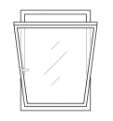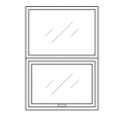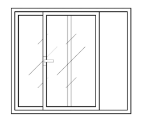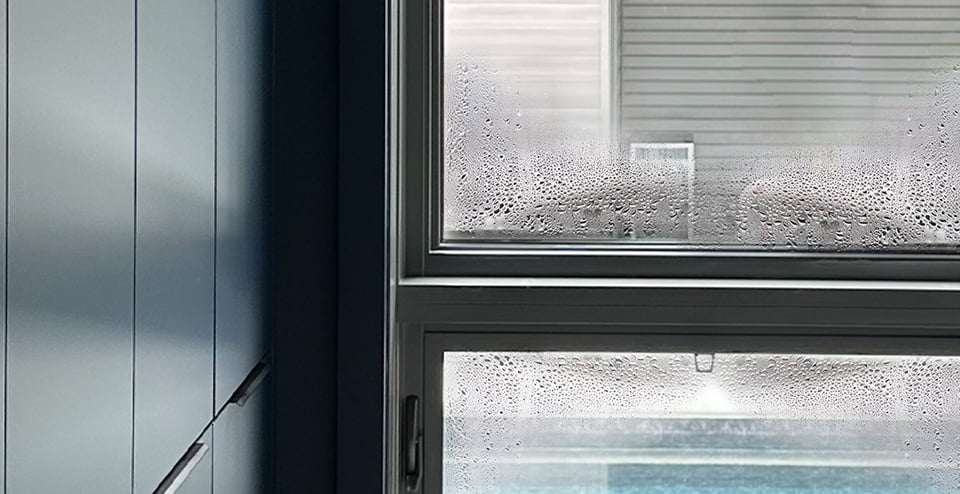In Québec, the changing seasons provide a wondrous natural spectacle, but they also mean plenty of household inconveniences, like condensation on our windows. While this is a common phenomenon, knowing when and how to deal with it is important.
What is condensation and why does it occur?
Condensation on windows happens naturally in winter. It results from the clash of cold outside air with the warm, moist air inside our homes.
Another place where we commonly see condensation is on the outside of a glass containing a drink that has ice cubes in it.
While it isn’t especially attractive to look at and might seem to point to a problem, condensation isn’t necessarily a sign that a window is defective. In fact, it’s often quite the opposite, especially in newer homes.
If your windows fog up in the wintertime, often this means the seals around the window frames are working properly. That’s a good thing: your windows are keeping outside air from getting in, and helping preserve humidity inside the house, ensuring the occupants are comfortable.
Condensation is especially common on glass and metal surfaces, because they are excellent thermal conductors and quickly become cold.
The various types of condensation
Condensation can affect different parts of your windows, with different implications. Here is an overview of the common types of condensation that you may see.
Condensation on the outside of windows
Condensation on the outside of a window pane is nothing to worry about. It happens when warm, humid air comes into contact with the cooler glass surface, and goes away as soon as the temperature reaches equilibrium.
Condensation on the inside of windows
Indoors, condensation is often caused by an everyday activity, like cooking or showering. Not to worry: it will clear up on its own.
Condensation between window panes
If you see condensation between the panes of a window, it could be a sign of a defect, such as a leak in the frame. If this happens with any of your GIT windows, we recommend that you contact us to have the situation evaluated.
At what point should you be worried?
A little condensation is normal, but if you start to see mould growth, or if simple wiping doesn’t cure a foggy windowpane, it’s time to act. There may be excess humidity in your home, and that could mean long-term problems for its structure and interior.
Managing indoor humidity: the guide to temperature and humidity control
To keep your windows free of condensation during the colder months, monitoring and controlling your home’s indoor humidity level is a must. To measure the level, buy a hygrometer.
The chart below lists the recommended relative humidity indoors for a given outdoor temperature. Use these guidelines to adjust the humidity level inside your home and in turn reduce the risk of condensation and frost on your windows. That way, you’ll not only have a clear view: you’ll also ensure a healthy living environment.

Causes of condensation and humidity on windows
Excessively humid air inside your house can result from a number of factors connected to our everyday activities and the indoor environment. Here are some of them.
Household activities
Simple activities like taking a shower, washing dishes or clothes, and even cooking food contribute to higher humidity.
Pets and plants
If you have pets and plants in your home, and an aquarium, this can also increase the humidity of the indoor air.
Ventilation and appliances
An incorrectly adjusted humidifier can produce too much moisture, and a poorly vented clothes dryer can also increase humidity indoors.
Structural features of the house
A damp basement or a crawl space with a dirt floor can result in higher humidity.
Improper ventilation/circulation
If you hang clothes to dry inside, and keep blinds and curtains closed, this can impede air circulation and promote condensation on windows.
Tips for dealing with condensation and frost on windows
Your windows are a barometer of your home’s humidity. They don’t only provide a view to the outside; they can also tell you when it’s time to act to ensure a healthy living environment.
When your window panes fog up, this is an indicator that the relative humidity may be too high. If so, it’s time to apply one of the following recommendations to prevent complications that could prove expensive.
Free up your windows
Remove the bug screens from your windows before winter. This will help air circulate more freely and keep condensation from forming.
Let light and air flow
Don’t leave your curtains or blinds closed all day or all night. Open them regularly; this way, you’ll warm up the window glass and reduce fogging.
Don’t go too green
Too many indoor plants can lead to excess humidity. If you love plants, at least try not to keep that many indoors, or make sure you don’t overwater them.
Check your appliances
Make sure your dryer is properly connected to the outside and that the vent hose has no leaks.
Stack wood outside
If you use wood to heat your home, be sure to stack it outside, so that the moisture inside the logs doesn’t increase the humidity level inside.
Ventilate properly
Run the bathroom fan when you take a bath or shower and the kitchen range hood when you cook. They will help expel the humidity you generate.
Take shorter showers
It may seem simple, but taking less time in the shower reduces humidity—plus it’s also better for the environment and your energy bill!
Optimize heating
Put a heat source near windows; this will help warm the window glass and reduce condensation.
Adjust the humidity
When it starts to get chilly inside as winter approaches, check and adjust the indoor humidity before you turn the heat up: this can improve heating efficiency.
Balance the heating
When you have the heat on, check the temperature from room to room to make sure it is constant. This will avoid creating zones that are conducive to condensation.
Go with the flow
Whenever possible, keep inside doors open to promote efficient air circulation throughout the house.
Air things out strategically
On milder days in winter, ventilate the house by opening windows to let dry outside air in and indoor humidity out.
Keep the basement warm
Don’t forget to heat the basement: remember, hot air rises, so you’ll help warm the upper floors.
A word about dehumidifiers
A dehumidifier is an effective solution for reducing excess humidity inside your home and, in turn, controlling condensation on windows.
These devices work by extracting damp air from a room, cooling it to condense the moisture, then heating it and recirculating it around the room. They lower the humidity leveI as well as reduce the risk of condensation and mould.
For best results, run your dehumidifier in an area where humidity is highest, like the kitchen, bathroom or basement. Be sure to choose the right model for the size of your space, and empty the tank regularly.
Preventing condensation: summing up
There are many simple ways to keep humidity levels in your home under control. But if your home has single-pane, old or outdated windows, you may find preventing condensation more difficult. In that case, you should consider replacing them with superior quality windows.
Keep an eye out for signs, and follow this advice to reduce the chances of fogging and frost on your windows. And if you have any questions, get in touch with us!



















